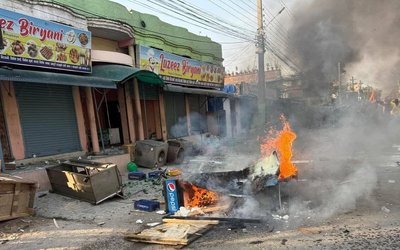More on News






Environmental activist CHANDA RANA spoke to New Spotlight about her battle against Mikania Micrantha. Excerpts:
What is the state of the alien plant Mikania Micrantha?
The situation is alarming as it is gradually covering the entire national park, and surrounding areas, including the buffer zone. Most worrying thing about the plant is that it is now spreading along Mugling-Narayanghat highway.
Have you done something new about this?
I have been doing a lot of things. Just a few weeks back, I got a golden opportunity to meet NASA’s executive director in one of the international conferences in Kathmandu. I handed him my documentary. I also requested him to give his feedback about the presentation. The documentary consists of the findings of my study and field observations. Apart from this, I have tried to include the voices of the concerned stakeholders who are closely observing the adverse effects of the invasion and infestation of the wild climber.
What are your worries about the plant?
There is the need to act immediately to save the Chitwan National Park from invasion of wild weed Mikania and preserve one of the world’s unique eco-systems and natural heritage sites. If we will not take action, the wild plant Micrantha will destroy Chitwan’s unique eco-system and wildlife habitat.
How big is the threat?
The weed is now killing the habitat areas of world heritage sites. If we are unable to take certain actions, the plant will wipe out the entire national park within four or five years. My two years’ experience has taught me that the plant will destroy the forest in case no rapid action is taken against it. Along with surrounding areas of the national park, the plant is now reaching up to the Mugling highway. We need to control the plant by carrying out a survey.
What initiatives are you taking to contain the threat?
I have been taking the initiative in several ways. I have been meeting people, experts and international experts.
When did you notice the threat first?
During my holiday trip to Chitwan National Park in December 2007, I noticed the infestation by the wild plant. I noticed the entire grassland, bushes, and the main habitat of one horned rhinos was covered by this wild plant.
What is your aim now?
My aim is to make this as a global issue as soon as possible. We are all aware that global warming is threatening the very existence of human civilization and forests including national parks like Chitwan which have been playing a vital role as carbon sinks and are contributing to mitigate adverse effects of global warming.
What is your strategy now?
I want to work with National Conservation Trust, Ministry of Forest and Soil Conservation and Geological Society of London from outside. I want to coordinate with other concerned organizations and I am ready to provide support as per their requirement. I cannot afford to allow the issue to die. I will hold it. My effort will be to carry it on. I stayed one month in the community. I have also presented the documentary at the Geological Society. I also handed over the documentary to WWF. I have already started to raise awareness among the international community about the threat.






